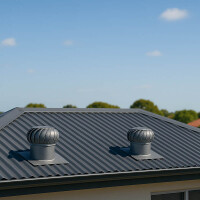Cooler Homes Without Power: The Benefits of Professional Whirlybird Installation!
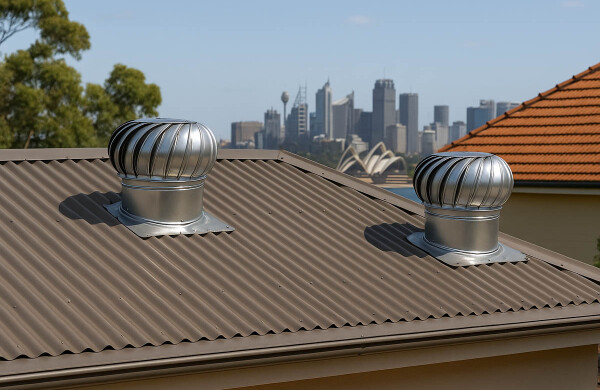
Have you ever had to venture into your attic on a hot day? Feels like walking into your own personal rooftop sauna, right? Now, imagine that heat pressing down on your entire home, all day, every day! That’s where whirlybirds come in. These roof vents work hard to remove all that hot air from your roof. And when installed right, they can keep your home cool without you even switching on the aircon!
Installing a whirlybird on your roof yourself might save you a few bucks now, but in the long run, a DIY job can lead to a lot of regret. This guide is for the Sydney homeowners who want to see the best results that come from installing whirlybird vents: optimum performance, a cooler home and lower energy bills! We’ll break down how whirlybirds actually work, why your roof might be begging for one, and why “professional installation” isn’t just an upsell, but a vital part of keeping your home cool without power.
How Do Whirlybird Vents Work?
Put simply, whirlybird vents are a natural version of air-conditioning! They don’t use electricity or complex controls. Just wind, pressure, and a clever design (that looks a bit steampunk to be honest!)
Here’s how they work: when wind hits the turbine head (that spinning dome you see on rooftops), it rotates. This spinning creates a vacuum effect inside the vent, which then extracts the hot, trapped air from your roof cavity. Even on still days, temperature differences between your roof space and the outside air create enough pressure for passive ventilation. The hotter it gets inside, the more desperate that air is to escape—and a whirlybird vent gives it an easy way out!
Meanwhile, cool, fresh air is pulled into your home through eaves or ceiling vents, creating a natural airflow loop. It’s like cracking open a window on a summer night, except it’s your whole roof, so the cooling effect is far greater!
No electric fans, no wiring, no high power bills. Just pure physics, providing you with a cooler home. So, would your home benefit from a whirlybird vent? Read on to find out!
Does Your Roof Need A Whirlybird?
The short answer? Probably! If your roof space or attic could double as a sauna, it’s time to consider a whirlybird.
Roofs trap heat. That’s their job! But when that heat builds up with nowhere to go, it radiates down into your living space. Add humidity, poor airflow, and rising energy bills, and you’ve got yourself a big problem.
Whirlybirds are the answer to that problem! They pull hot air out, reduce moisture buildup (AKA mould’s best friend), and help your insulation actually do its job. If you’ve got a metal roof, dark tiles, poor ventilation, or just hate paying to run the AC 24/7—yeah, your roof is begging for one!
Newer homes can benefit from whirlybirds as well! Ventilation is often overlooked in modern builds, and whirlybirds are a low-cost fix that can make a huge difference.
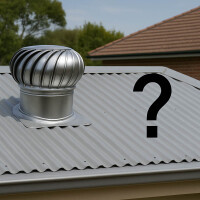
Why Should Whirlybirds Be Installed Professionally?
As we mentioned at the beginning, installing a whirlybird isn’t just a matter of climbing a ladder and hoping for the best. You can DIY it, but if you don’t know what you’re doing, this can lead to roof leaks, noise complaints, or even a whirlybird that doesn’t even provide ventilation at all! Professional installation isn’t about being fancy or spending a lot of money—it’s about getting the job done right. From knowing your roof’s quirks to sealing things up so water doesn’t sneak in during the next storm, there’s more to it than meets the eye! Here’s why professional whirlybird installation is worth the investment:
Roof Specific Expertise
Roofs aren’t one-size-fits-all. Whether your roof is pitched, flat, tiled, or metal makes a big difference, and whirlybirds need to be matched accordingly. Professional installers know how to work with the unique aspects of each roof material and structure without causing damage. They understand airflow patterns, load-bearing limits, and how to install without compromising your roof’s integrity! If you try to DIY it and you don’t understand your roof type properly, you could end up with a spinning vent that leaks, squeaks, or does absolutely nothing. The roof-specific expertise of a professional installer means the difference between a whirlybird that saves you money and one that becomes an expensive ornament!
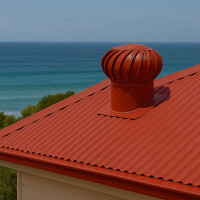
Variety Of Whirlybirds
There is a huge variety of whirlybirds available in different sizes, materials, and airflow capacities. Choosing the wrong one is like putting truck tires on a scooter! Some are built for high-wind areas, others for bushfire zones, and a pro knows the difference between them. They’ll be able to choose the perfect type of whirlybird for your home and local environment.
Then there’s the look! Whirlybirds come in a range of colours such as classic silver, matte black, deep red, and even Colorbond-matched tones. You want it to work, of course, but you also want it to blend in and not stick out! Professionals can match it to your roof’s exact shade, so it disappears visually while doing the hard work behind the scenes.

Perfect Placement
You can’t just pop a whirlybird anywhere on your roof and call it a day. Placement matters a lot! Put it too low on the roof, and it won’t pull hot air from the highest (and hottest) points. Too high, and you might miss airflow zones entirely! Professionals know how to read your roof like a map, factoring pitch, direction, internal structure, and wind patterns. They can then position vents where they’ll actually work, not just where they’re easy to reach! Their expert knowledge can mean the difference between a vent that spins and a vent that actually cools. Perfect placement means peak performance and, most importantly, a cooler home!
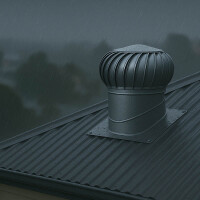
Watertight Sealing
Here’s the part most DIYers underestimate: sealing. When installing a whirlybird vent, every screw, gap, and flashing point is a potential way for water to sneak in. Rain doesn’t need much of an opening to start dripping into your ceiling, and once it does, you’re looking at warped insulation, mould, and a hefty repair bill.
Professionals know how to make a whirlybird installation watertight. They use proper flashing materials, sealants that hold up to brutal Sydney sun and sideways rain, and techniques matched to your specific roof type—tile, tin, whatever. Professionals don’t cut corners, so you can be sure that your whirlybird will be completely watertight.

Safety & Warranty
Now let’s get serious. Installing a whirlybird might seem like a straightforward task, but it’s actually very complex and risky. Climbing onto your roof without proper safety measures is not just dangerous—it can be fatal! According to SafeWork NSW, "Falls from heights are the number one cause of traumatic fatalities in the NSW building and construction industry." Even a fall from as little as two meters can cause serious injury or even death!
Professional installers are trained to navigate these risks safely. They use fall-prevention devices such as temporary work platforms, guardrails, and scaffolding to ensure safety while working at heights. They are knowledgeable about the specific requirements for safe roof work, including the use of roof anchor points and harness systems.
As well as safety, professional installation is crucial for warranty compliance! Many manufacturers require that certified professionals install whirlybirds in order to maintain the product warranty. Improper installation can lead to issues like leaks, noise, and reduced efficiency, which may not be covered under your warranty. Hiring a professional for whirlybird installation ensures not only your personal safety but also the longevity and effectiveness of the ventilation system.
Professional Maintenance
Whirlybirds are a fantastic invention, but you can’t just install and forget about them. Over time, they can wear out. That’s why you need a professional who knows how to maintain whirlybird vents! When you hire pros to install your whirlybird, you’re not just paying for the install; you’re also tapping into a long-term safety net. They know what to check, when to service, and how to keep things spinning smoothly. So if you experience any issues after installation, you’ve got someone who knows exactly how to fix it!
How Can I Choose The Best Whirlybird Installers?
Choosing the right whirlybird installer isn’t just about picking the first name that pops up in a search. A solid installation can mean years of hassle-free cooling, while a dodgy one can leave you with leaks, rattles, and regrets. So don’t just Google and gamble. Do your research. Read reviews, look at before-and-after photos, and check for local experience, as this speaks louder than slick ads. Ask good questions: Do they offer a warranty? Do they inspect your roof before quoting? Can they explain which whirlybird suits your home and why?
Avoid one-size-fits-all answers. A good installer will factor in your roof pitch, material, ceiling insulation, and even your local wind conditions. And if they brush off sealing or placement like it’s no big deal? Walk away! Companies get bonus points if they handle maintenance or follow-ups. You don’t want to hire a professional who vanishes the moment the invoice is paid!
Here’s your checklist of what to look for when choosing a good whirlybird installer:
✅ Licensed and insured
✅ Proven experience with your specific roof type
✅ Strong reviews or referrals from real people
✅ Clear quote with no weird fine print
✅ Offers ongoing maintenance or service plans
✅ Warranty on both the product and the installation
✅ Knowledgeable about vent placement and waterproofing
✅ Doesn’t pressure you into upgrades you don’t need
When your whirlybird vent installation is done properly, it will provide you with hassle-free home cooling all year round, without using a drop of electricity!
